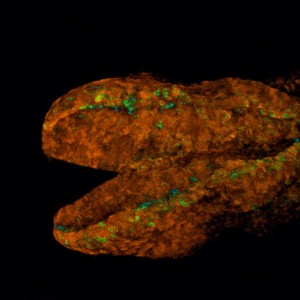Live imaging of caspase activation in mouse embryos reveals the physiological roles of apoptosis in neural tube closure

Researchers at the University of Tokyo’s Graduate School of Pharmaceutical Sciences have demonstrated that caspase-mediated apoptosis is essential for normal neural development.
Apoptotic cell death is essential for normal development and for maintaining tissue homeostasis. Caspases, an extensively-studied family of cysteine proteases, have been shown to execute cell-killing programs by cleaving specific target proteins. Deficiency of mitochondrial cell death pathway genes (caspase-3 , caspase-9 , or apaf-1) leads to neurodevelopmental abnormalities such as exencephaly, a phenotype mainly caused by the failure of cranial neural tube closure (NTC).
Professor Masayuki Miura, assistant professor Yoshifumi Yamaguchi and their research group at the Department of Genetics have developed a transgenic mouse, SCAT3, which expresses a monitoring probe using fluorescence resonance energy transfer (FRET) technology and allowing the group to detect caspase activation and apoptotic cells in real time during cranial NTC at both macroscopic and single-cell resolution. Live caspase activation imaging in embryo with a fast-scanning confocal microscope revealed that cells containing activated caspases showed typical and nontypical apoptotic behavior in a region-specific manner during NTC.
Inhibiting caspase activation perturbed and delayed the smooth progression of cranial NTC, which might increase the risk of exencephaly. These results suggest that caspase-mediated cell removal facilitates NTC completion within a limited developmental window. The functional live-imaging analysis of caspase activation and NTC in these mice has great potential to reveal the dynamics of NTC in various neural tube defect (NTD) mutants and to provide mechanistic insights into the causal relationships between gene function or environmental perturbation and NTDs, thereby also improving our understanding of the causes of human NTDs.
Press release (Japanese)
Paper
Yamaguchi, Y., Shinotsuka, N., Nonomura, K., Takemoto, K., Kuida, K., Yoshida, H., and Miura, M.,
“Live imaging of apoptosis in a novel transgenic mouse highlights its role in neural tube closure”,
J. Cell Biol. 195, 1047-1060, 2011. doi: 10.1083/jcb.201104057
Article link







